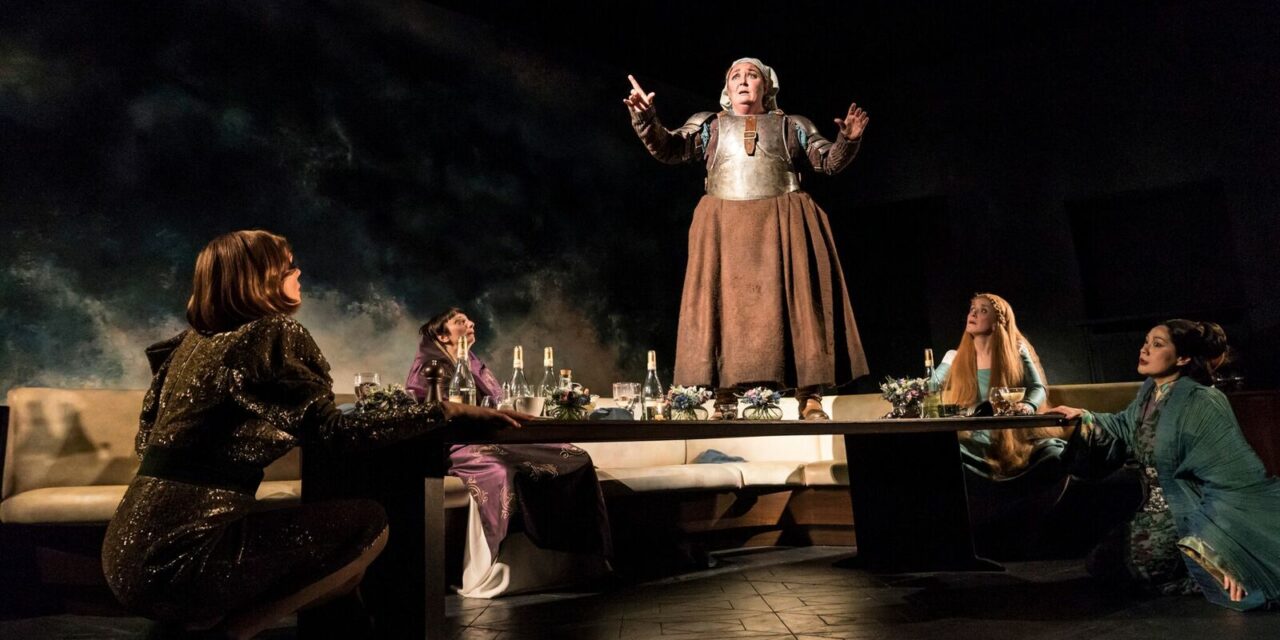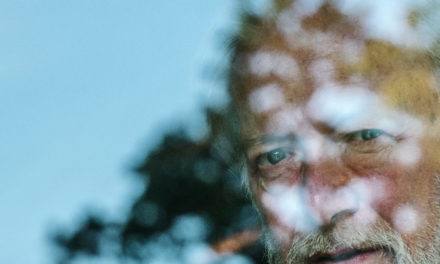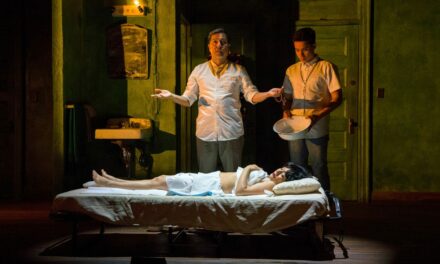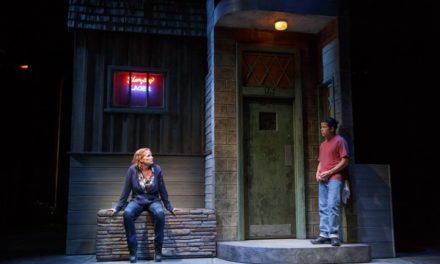Written only as recently as 1981, Caryl Churchill’s modern classic Top Girls has already been on university curricula for decades. As such, and in Lindsay Turner’s production at the Royal National Theatre London, it feels both strangely familiar and refreshing.
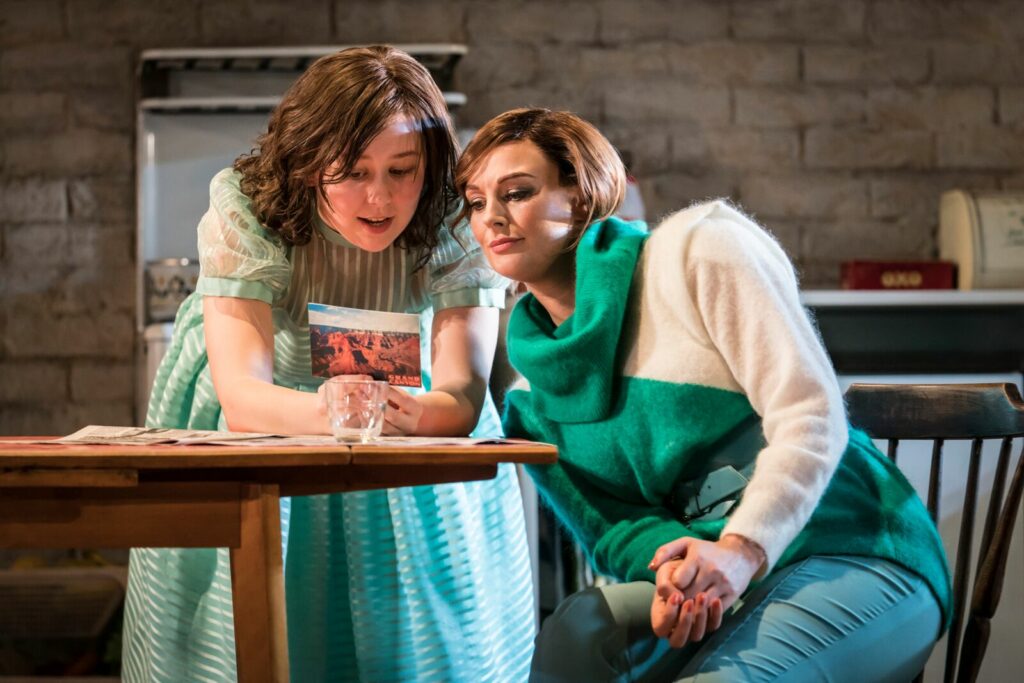
Liv Hill plays Angie, Katherine Kingsley plays Marlene in Top Girls by Caryl Churchill Photo by Johan Persson
It’s worth recapping briefly on the play’s structure, which consists of four scenes. There is the iconic phantasmagorical opening featuring protagonist Marlene, the newly promoted Managing Director of a women’s employment agency Top Girls, at a Saturday night dinner party together with five historic and mythical female figures ranging from 9th century (secretly female) Pope Joan and 13th century Japanese concubine turned nun Lady Nijo, to Victorian traveller Isabella Bird, folklorically famous Dull Gret captured in a Bruegel painting and patient Griselda celebrated by both Boccaccio and Chaucer. The action then moves to the harsh reality of the early 1980s. Scene Two is a picture of teenage angst set in the backyard of a Suffolk cottage on Sunday afternoon and involving fifteen-year-old Angie who turns out to be the niece of high flying Marlene. Move on to Monday morning in the Top Girls agency in London for more of a landscape view of the present historical moment of growing female prosperity within which Angie will turn up to seek refuge with her steely aunt. The final scene, following an interval, is set a year previously, in the cottage of Angie’s mother Joyce and featuring a dramatic reunion of Marlene, Joyce, and Angie for the first time in six years.
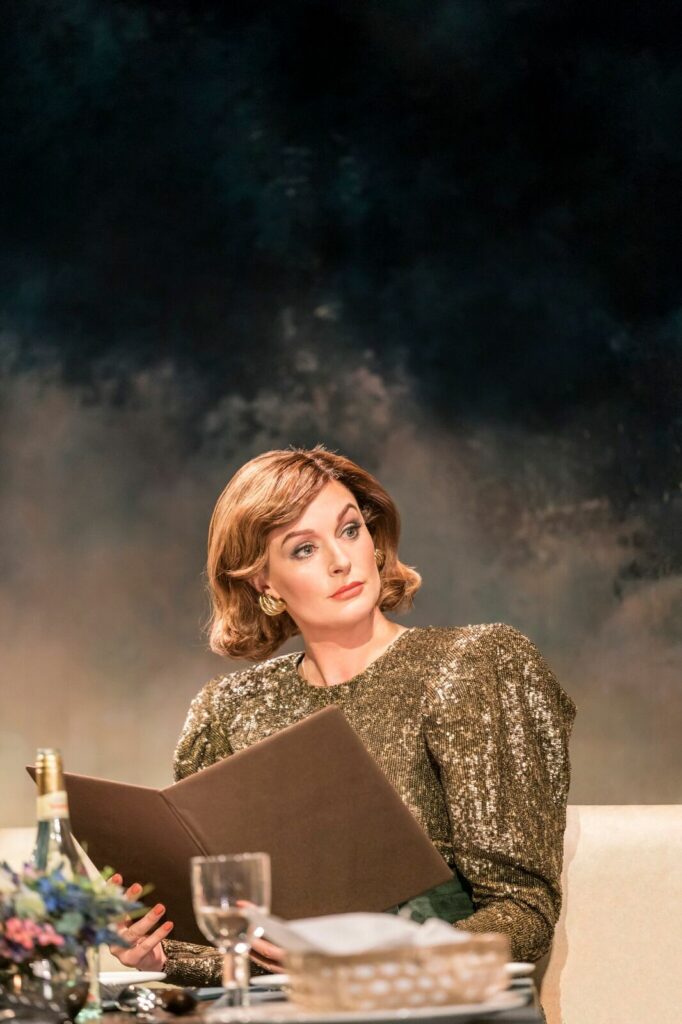
Katherine Kingsley plays Marlenen in Top Girls by Caryl Churchill. Photo by Johan Persson
Despite its experimental opening and a supremely elegant execution throughout on Churchill’s part, dramaturgically, this play remains within the well-made-play tradition of a build up towards a big cathartic revelation of a withheld secret. It is also a state of the nation play, taking place, as it does, in the early days of Margaret Thatcher’s first term as Prime Minister. In its form and structure, the play’s finale is a dialectic exploration of this historical moment and its implications on the position of women on the cusp of neo-liberal capitalism. What it has in common with the present day – besides the gender of the Prime Minister – is a palpable sense of political anxiety.
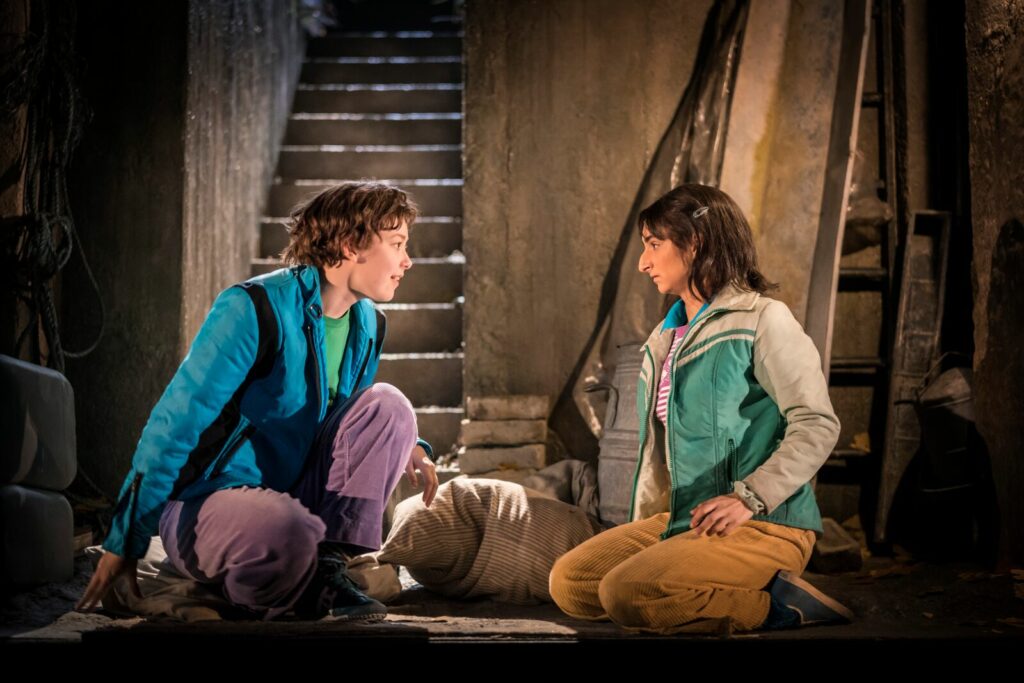
Liv Hills plays Angie, Ashna Rabheru plays Kit in Top Girls by Caryl Churchill. Photo by Johan Persson
Lindsay Turner’s production, designed by Ian MacNeil and Merle Hensel, favors a peacock color palette of intense blues, greens, golds, and tranquil turquoise for Marlene’s world, dotted with vibrant reds for Angie and Joyce. Turner makes the interesting decision to avoid the customary doubling of numerous characters and, for the first time in the play’s history, hires a full 18-strong all-female ensemble to deliver this piece. (Together with the all-female Emilia in the West End, this must be the best moment in history for the employment rates of British actresses – hooray!) Quantity aside, however, the production delivers over and above any expectation in relation to the quality of acting too. Every single member of the cast seems to shine, but if pressed, one could highlight Amanda Lawrence’s perfectly comically timed Pope Joan, Lucy Ellinson’s riveting Patient Griselda, Ashna Rabheru’s sparkling Kit, Lucy Black’s wiry Joyce, Katherine Kingsley’s regal Marlene, and Liv Hill’s excellent Angie.
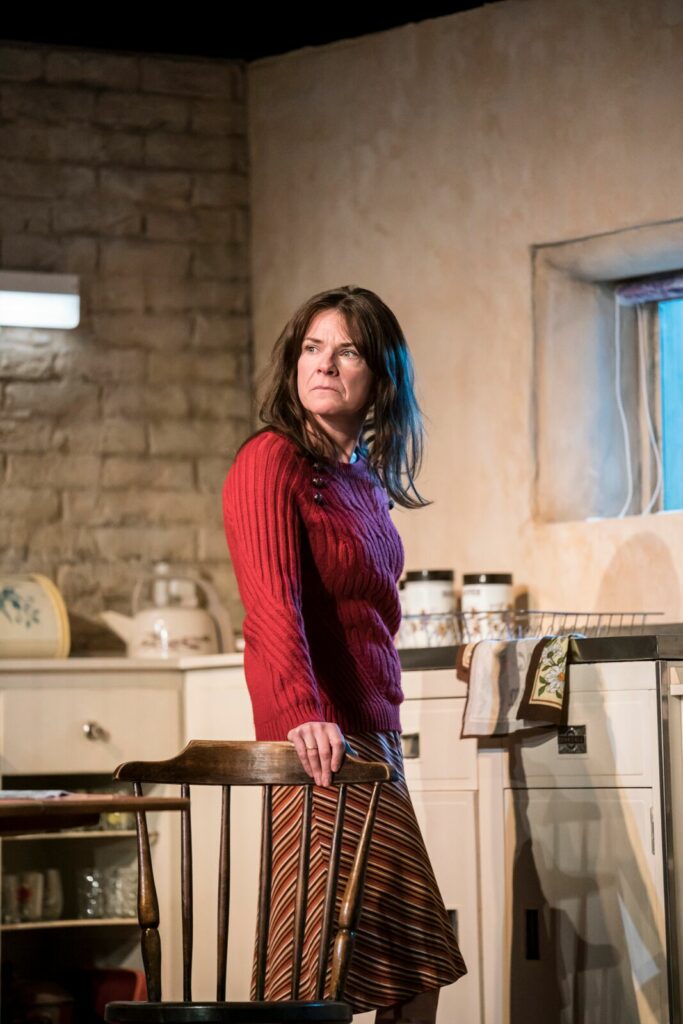
Lucy Black plays Joyce in Top Girls by Caryl Churchill Photo by Johan Persson
Turner’s main interpretative take on the play is to highlight, through a fugue-like delivery of lines and verbal competition, the fundamental absence of listening, understanding, and compassion in this particular world.
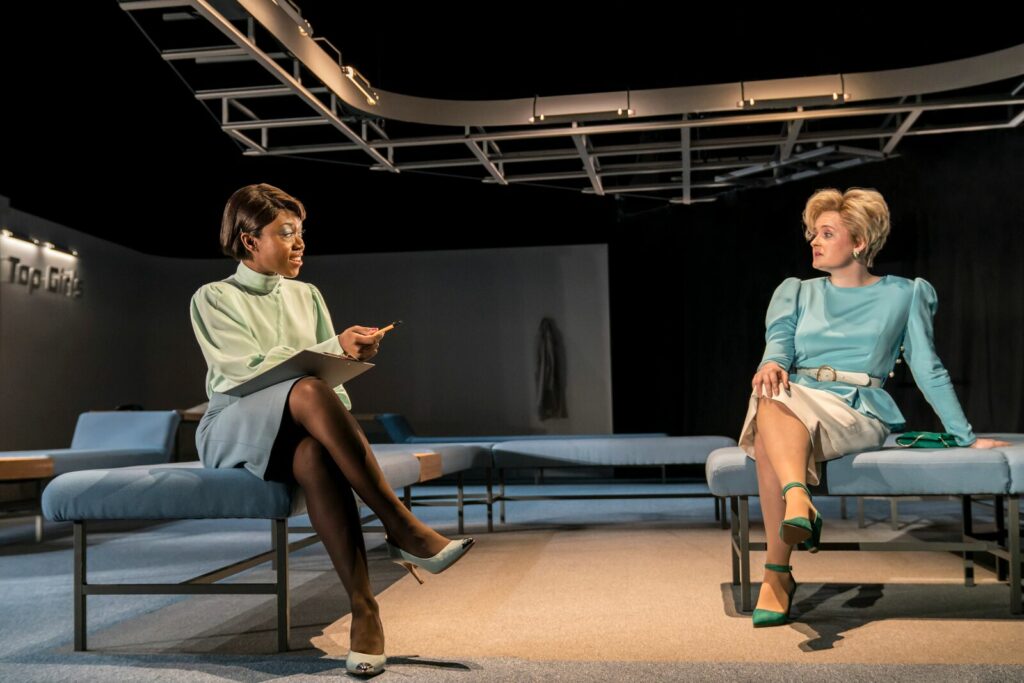
Nadia Williams plays Jeanine, Jessica Brindle plays Shona in Top Girls by Caryl Churchill Photo by Johan Persson
As its design scheme suggests, this production, however, is more about display than about any potential political incision, and if you happen to see it after the afore-mentioned roof-raising Emilia, Top Girls might even come across as disappointing. However, especially taking place at the National, it is an important addition to the current offering in London and to a long string of production histories of Churchill’s play, as well as being a decent salute to the post-#MeToo, pre-#Brexit turns of the tide.
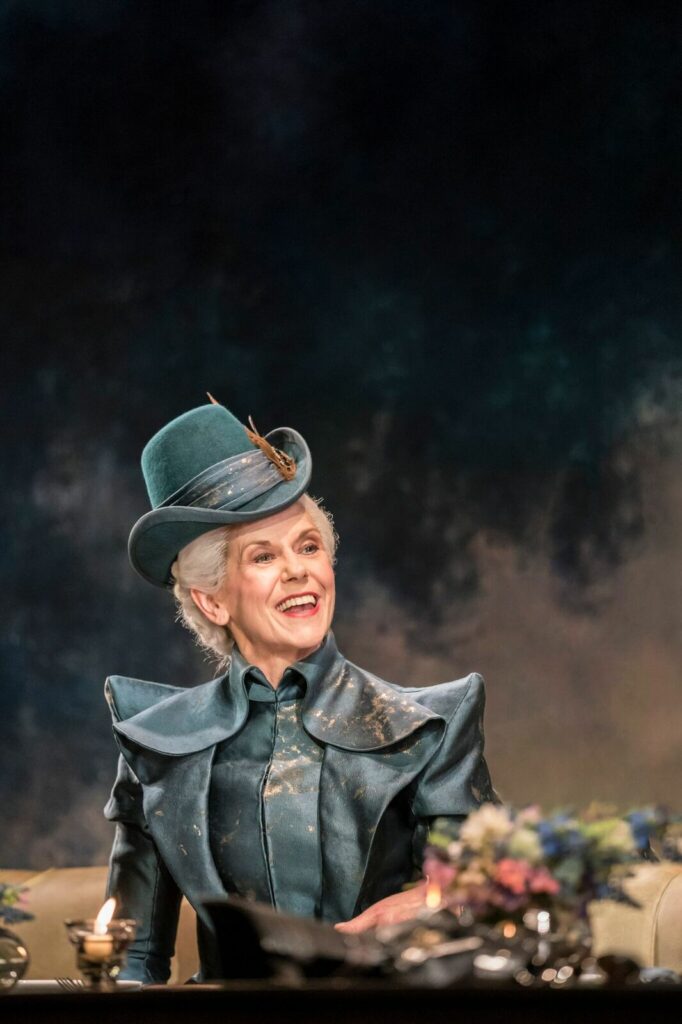
Siobhán Redmond plays Isabella Bird in Top Girls by Caryl Churchill. Photo by Johan Persson
This post was written by the author in their personal capacity.The opinions expressed in this article are the author’s own and do not reflect the view of The Theatre Times, their staff or collaborators.
This post was written by Duška Radosavljević.
The views expressed here belong to the author and do not necessarily reflect our views and opinions.

